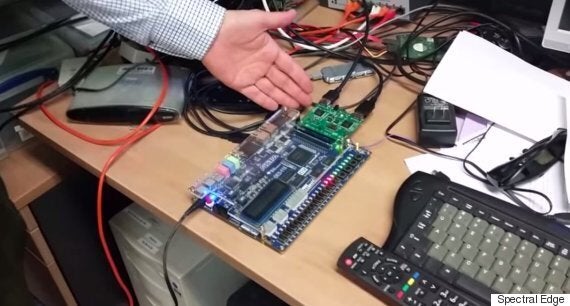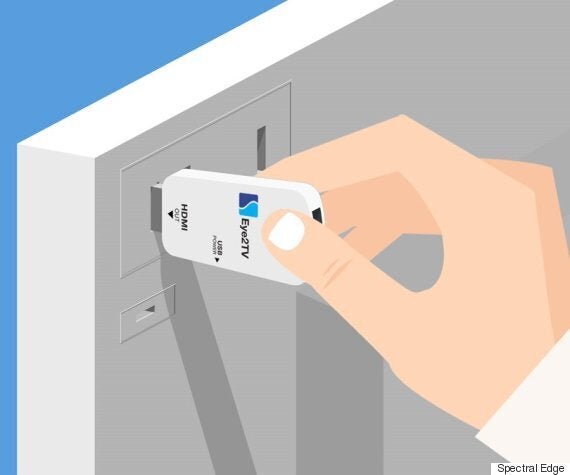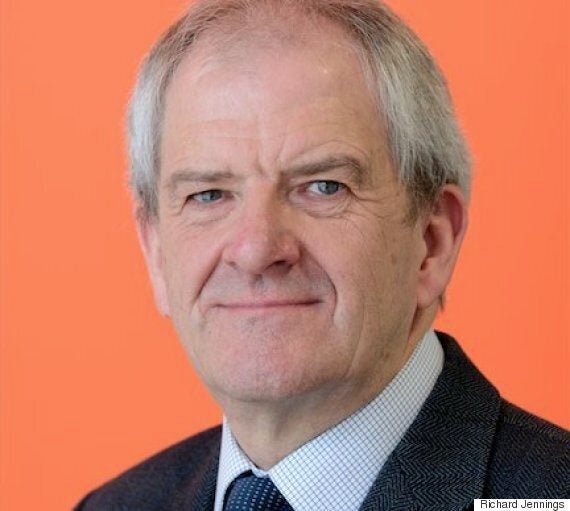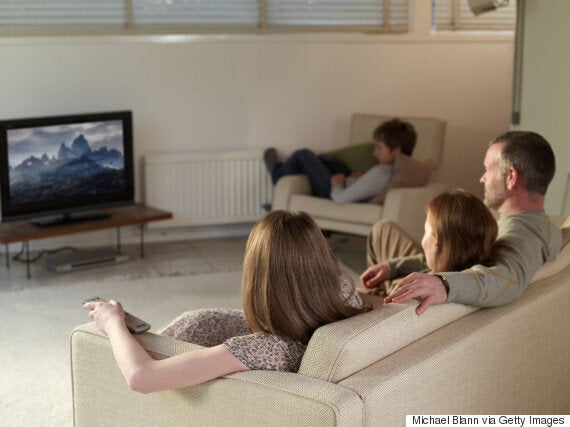When Liverpool took on Bulgarian team Ludogorets in a Champions League game last year, some TV viewers had no idea which team was which.
The two sides - one wearing red and one wearing green - proved to be a nightmare for supporters who were red-green colour blind and couldn't tell the difference between the strips as the players raced around the pitch.
"Green pitch, green kit, red kit... all look the same. It's just floating heads," tweeted one fan during the September 2014 game, while another said "I can't tell who has the ball!"
Liverpool won 2-1, but many people had already switched off in disappointment before the game's result.

The Liverpool and Ludogorets game baffled colour blind fans
Colour blindness affects around 2.7 million people in the UK - about 4.5% of the population. It's overwhelmingly men who are colour blind, and the most common form is to have difficulty with green and red, seeing both as indistinguishable grey or brownish shades.
"It doesn't incapacitate you in any way," says Richard Jennings, who is in his late 60s, from Sussex, and is colour blind. "It's like I'm 5 foot 9 tall: you kind of accept it. If you had an extremely rare version of colour blindness, like people who only see in black and white, then you might find it harder."
Jennings' colour blindness is the common red-green variety, and hasn't been a hindrance to his life, ("I couldn't be a jet pilot, but that wasn't a problem for me," he laughs.) But he is an experimental subject for a new technology that could make colour blind people have "normal" vision when they watch TV - a significant invention as we spend an average of almost four hours a day looking at a TV.
SEE ALSO:
TV can be frustrating to people with colour blindness. The danger areas are "that kind of thing where you've got a lot of colour and you just can't see the contrast," says Jennings. "Watching something like gardening programmes, everything sometimes merges into one, instead of being dramatic and distinct."
The biggest problem is sports: especially when teams have red and green kits, and play on green grass, like when Liverpool played Ludogorets.
Jennings doesn't watch a lot of sport on TV, but he suspects he'd watch more rugby if he could distinguish the teams more reliably: "It may be, in a funny way, one of the reasons why I don't watch more sports. You evolve, and you don't put yourself into the situation where that arises."
The technology Jennings tested originates at a university campus in Norwich, where there is a lab which investigates colour.

Spectral Edge developing the technology
Scientists and academics at The Colour Group at the University of East Anglia spend their time considering what makes orange, how we always recognise the colour blue - no matter whether we look at it under a blue sky or a yellowish lamp - and if it's possible to work out where the light source was when a picture was taken, using something called "physics vision".
The group's research into helping colour blind people watch TV is now being commercialised into software called Eyeteq. The company behind it, called Spectral Edge, is trying to crowdfund £100,000 on Kickstarter to build an adaptor no bigger than a keyring, which can plug into TVs to make the picture appear normal to colour blind viewers.
Colour blindness can be made worse while looking at a screen, explains Christopher Cytera, the head of Spectral Edge, because viewers have fewer dimensions as well as less colour information to process.
Jennings prefers natural history documentaries and gardening shows to sports - but these can both be affected. Cooking programmes are another confusing area, says Cytera. "Red and green come up a lot when you're doing stir fries and salads; red and green peppers for example, or whether steaks are well done or rare."
"Maybe it's subliminal, but even though you're not eating the food you're looking at on TV, your tastebuds are somewhat whetted by what you see: that's why we have packaging in supermarkets which makes food look attractive," he adds.
Enjoyment of nature programmes can be affected too. "People could be more engaged with flowers and insects [using the Eyeteq adaptor] in a way that they couldn't be engaged with before," says Cytera.

The adaptor - which doesn't yet exist - would plug into TVs and gaming devices
The idea behind Eyeteq is simply to help people enjoy TV rather than being frustrated by it. "It will make the content more engaging, make it altogether more pleasurable to view," says Cytera.
Eyeteq uses a process called image fusion, usually used in technology like satellites. Counterintuitively, it relies on colour blind people having particularly good vision in some areas of the colour spectrum.
"Colour blind people are less sensitive to colour," Cytera explains. "But because most of their vision is desensitised, there are some parts which are slightly increased in sensivity. It's a bit like a deaf person who has got very acute vision, or a blind person who can hear very well. So what we do is we manipulate the image, so there's a little bit more energy there in those areas where they are more sensitive."
The Eyeteq software effectively "turns up" the contrast on parts of the colour spectrum which colour blind people can see, to make the whole TV picture clearer.
The effect is that red and green - which appear as identical greys to many colour blind people - are now two clearly distinct shades of grey.

For friends and family watching the TV who aren't colour blind, the contrast between colours would seem a little more intense, as shown in this video:
Though many attempts have been made to help colour blind people see better on screens, Cytera believes the adaptor his company is developing is the first attempt at something that could hit the mass-market.
If Spectral Edge reaches its funding target of £100,000 by 13 June, it will be able to create the adaptors and everyone who has pledged money will receive one. But the adaptor is just a first step - eventually Cytera hopes that the Eyeteq software itself could be embedded within TVs, as standard.
"It could just be a menu option, a bit like subtitling or audio description, it could just be a third option for colour blind people on the TV menu," he says.
Jennings, the Eyeteq test subject, didn't realise he was colour blind until his 20s. But it had hindered him in small ways he didn't notice, such as when he studied chemistry at university. "We used to do things called titrations. You had to determine the concentration of various liquids. That was determined by usually quite subtle colour changes.
"I always had problems with those but it was always in hindsight that I realised it was because I was slightly colour blind, not because I was incompetent!" He laughs now, but it did have an effect on his work: "It meant that for several of the courses I did very badly, but I did extremely well in others. It was this curious anomaly which I didn't understand."

Richard Jennings realised he was colour blind in his 20s
Before he retired from his research job at the University of Cambridge, Jennings would sometimes find - along with the other two colour blind men in the office - that a graph with lots of different coloured lines on it was unintelligible, and would ask for it to be redrawn with "dotted lines or crosses or something."
His realistation that he was colour blind was triggered by "the usual things," he says. It started with comments from his family which made it clear he didn't see things in quite the same way as them.
"You get the comments like 'why don't you wear your green jacket?' and I'd say 'I haven't got a green jacket, I've only got a light brown one.' Then they'd tell me 'well no, it's actually green,'" he recalls.
Jennings' wife - an educational psychologist - happened to have a collections of colour blindness tests: circles filled with coloured dots, which reveal a number to people who aren't colour blind. After trying them out, "it was very clear what the situation was," Jennings notes.
He signed up as a guinea pig for the Eyeteq software and tested still TV images which had been edited with the image fusion technology. So far, only Spectral Edge engineers have tested the technology on an actual set-top box.
Viewing the images - which technically involved seeing colours he's never seen before - was hugely rewarding, Jennings says. "I thought it would be relatively subtle and effective, which indeed it was. It was very interesting to see the simulations, you see what it would be like."
He would welcome the chance to remove his colour blindness when watching TV: "I think it would be great, especially for natural history programmes. That's where it would make a real difference."

The technology could significantly improve people's leisure time, says Cytera
With just under a month left to go to raise the £100,000 needed to create the first prototypes of the adaptor, Spectral Edge looks in danger of missing its target by some way - only around £4,000 has been pledged so far.
But this doesn't deter its leader, Cytera. The adaptor is a short-term project. It would be a good way to test the product "out in real world," he says, but he also has bigger dreams.
The company is talking to TV manufacturers about possible deals, and will continue to develop its software if it doesn't secure the funding for the adaptor this time.
Yes, the Eyeteq technology can't help colour blind people become airline pilots, but TV is a valuable part of our lives, Cytera argues. “We watch on average a few hours a day, so it can make a big difference to a big part of people’s leisure life, but also in the professional life, we can use the same technology in professional applications like computer programmes, to help people do their jobs better.”
Jobs involving design, fashion and media could all be affected by colour blindness, so could make use of the technology.
Eyeteq still being trialed, but Cytera hopes that once it’s proven it could be used in all kinds of other ways - even perhaps in glasses with a screen that would resolve colour blindness: “It’s technically possible,” he says.
As part of HuffPost’s What’s Working initiative, we’re profiling inspirational people and organisations who are making a positive contribution to society by finding solutions to the world’s problems.
Whether that’s homeless women taking up running to boost their confidence, or Desmond Tutu revealing why religion inspired him to fight for equality, we’re keen to share these stories. If you know of a someone who fits the bill, or would like to be featured, email us at ukwhatsworking@huffingtonpost.com."
